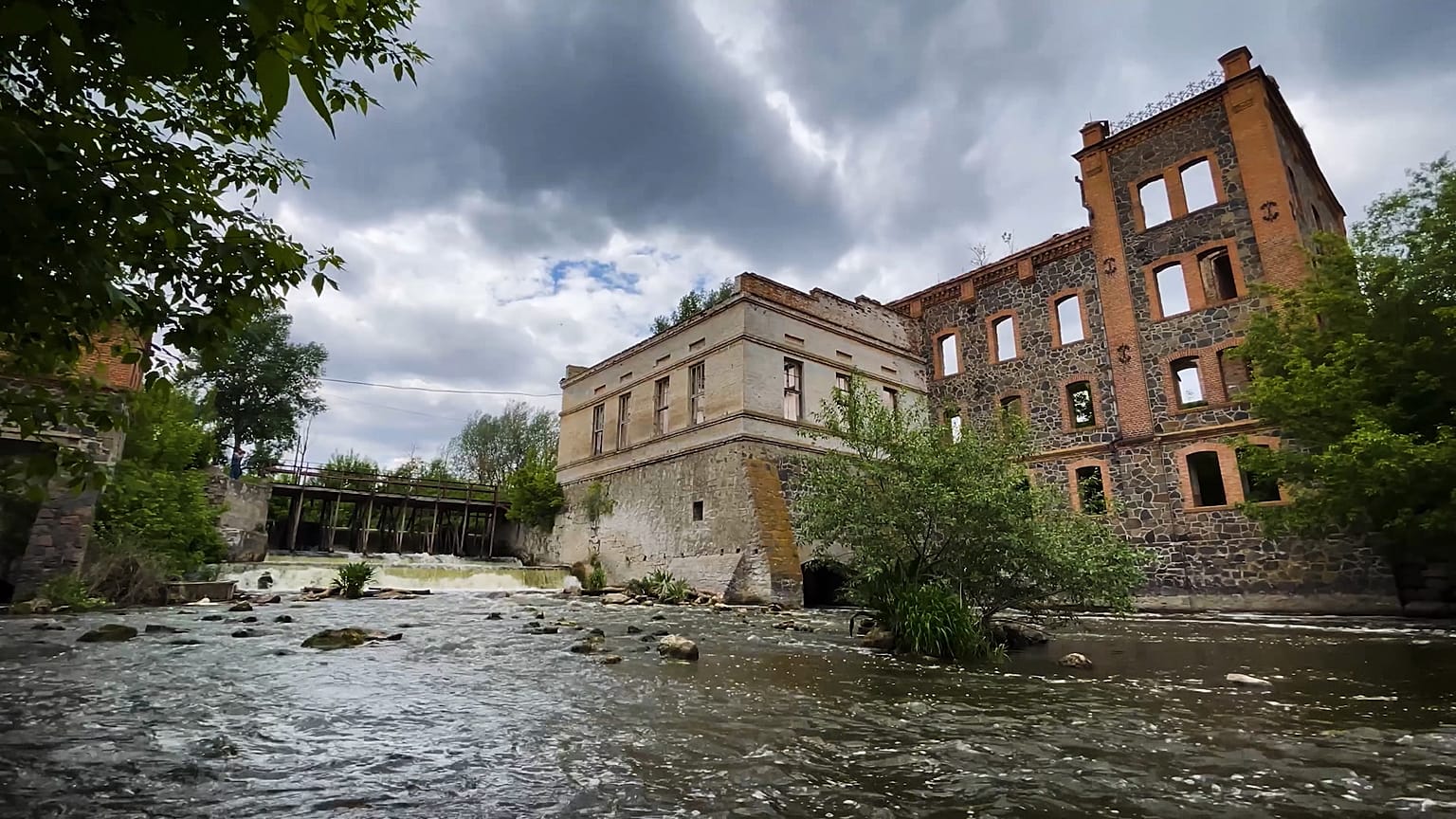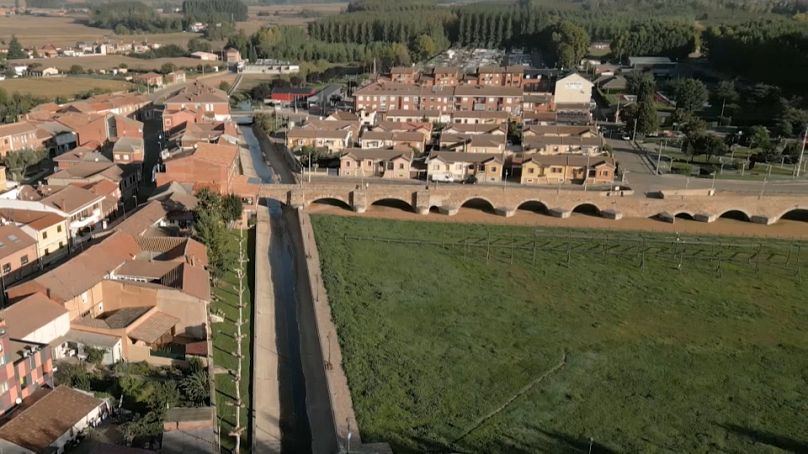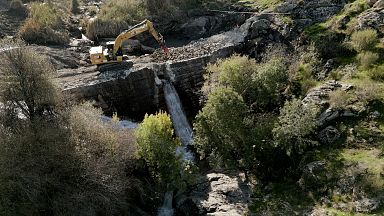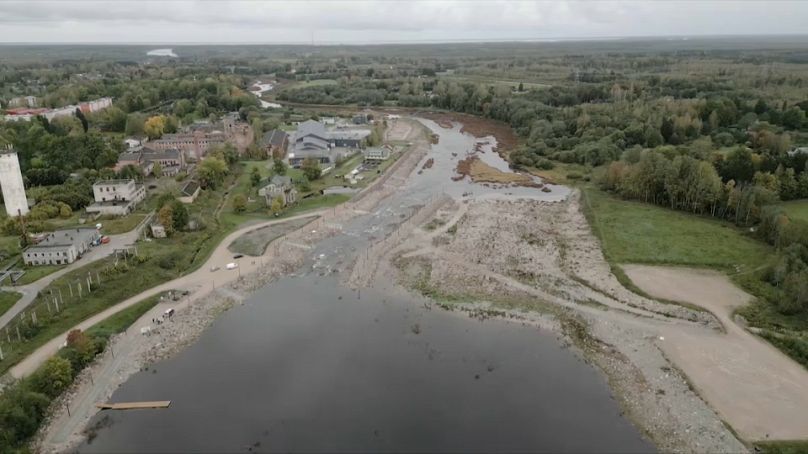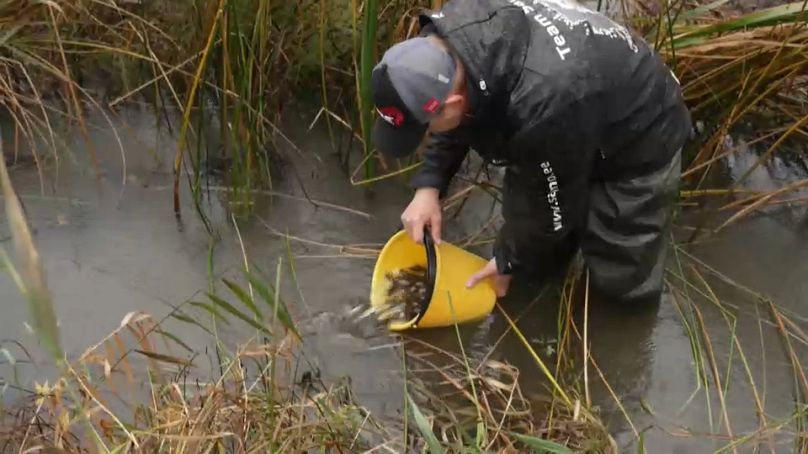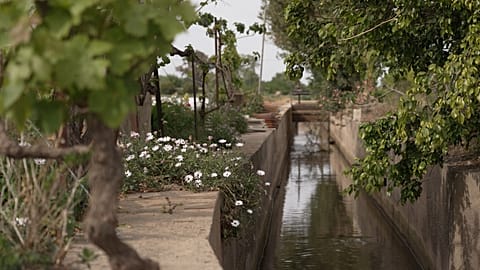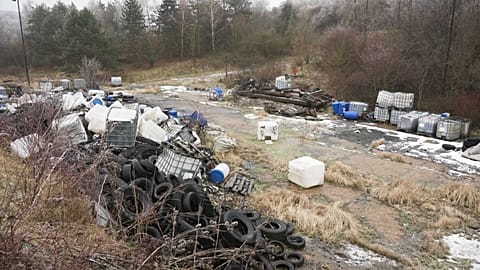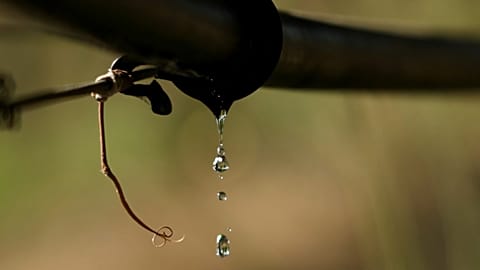With over one million dams in Europe, our rivers have become too fragmented. Most dams are essential for society but many are abandoned. However, a movement is underway, aiming to remove the remnants of the last century, improve water quality and halt the collapse of biodiversity.
The European Union's biodiversity strategy aims to free up 25,000 km of rivers before 2030. This includes removing unnecessary barriers such as dams, with positive results seen in Spain and Estonia.
Spain takes down over 100 abandoned dams in 2022
Castilla y León is one of Europe's most advanced regions in terms of river restoration. We visited a demolition site in the province of Segovia, where a dam, the remains of a hydroelectric station, had been abandoned for decades.
"This is an obsolete structure that presents structural risks. It is harming the quality of the water, which is forcing us to take other measures that are more costly than removing the structure itself," explains Arturo Prieto Blanco, technical director of the Duero Hydrographic Confederation. "The river will be restored to the state it was in, a few decades ago. These are the cheapest actions available to us because they last forever. "
More than 330 abandoned dams were removed in Europe last year. A third of them were in Spain. However, these projects often face reluctance from the locals. As seen in the neighbouring village of Navafria.
"They should have been emptied and cleaned." says one villager. Another thinks, "It costs a lot of money to remove a dam that wasn't really bothering anyone."
For some, removing the damn means the river cannot be exploited. "If you remove it, the river flows uselessly into the sea."
Dam removals: "Direct benefits for the people"
We spoke to Pao Fernandez Garrido, Project Manager for the Dam Removal Europe initiative. The movement aims to 'liberate' rivers.
She explained that a lot of disinformation is circulating online regarding dam removals.
"They make people fear that there will be no more water to put out fires or for irrigation. But the structures are abandoned and not being used. A lot of them are filled to the brim with sediment," she explains. "Improving the health of rivers, preventing flooding, the erosion of riverbeds, reducing the degradation of water quality or the proliferation of toxic algae... These are direct benefits for the people."
Spain has changed its strategy on dams, but also on lateral river management. We saw this when our team went north, to the Orbigo Valley, which is plagued by flooding. The problem in the village of Hospital de Orbigo, a regular stop for pilgrims on their way to Santiago de Compostela, is not a dam, but rather the narrowness of the river.
"If you look at old photos, you can see that the whole length of the bridge is actually, the river area. These houses below (the bridge) are a problem because on the one hand, they worsen the state of the river and on the other, they are at risk in the event of floods," says José Ignacio Santillán Ibañez, an engineer at DHC.
Less damage during floods
Restoring flood plains is another objective of the European Water Framework Directive. This is illustrated in the sector by the fact that the local dikes have been withdrawn and moved further away, allowing the river to overflow its banks.
According to José, thanks to restoration work done over a decade ago, the river was able to reclaim its space and even developed in different directions. It also became wider. Despite initial worries over dangers caused by floods, when the time came and water flow increased, "nothing happened."
For him, river restoration and dam removals can be very cost-effective. "It avoids the need to pay a lot of compensation," he adds.
However, the dam removal works did have to go up against the reluctance of the villagers and the village mayor. However, he soon changed his mind.
Here too, the work had caused incomprehension among residents of the village of Santa Marina del Rey, including the village mayor. But he has since changed his mind.
"Before, what we did was channel as much as possible," explains Francisco Javier Alvarez. "We constrained the river, and in the event of flooding there was a much more powerful flow, it tore up a lot of material and dug up the river. It also damaged the river's ecosystem. Now there is much less damage. It took us a while to understand this, but it's indeed a good solution."
Estonia's strives to reconnect its rivers
The Nature Restoration Act, which is being debated at the European level, aims to improve the health of the many rivers in poor condition, where species are declining at an alarming rate.
Estonia has spent millions of euros to reconnect its rivers, with financial support from the EU. Several obsolete dams have been removed from the Pärnu river.
The Sindi site is an emblem of this policy. Here once stood a huge barrier, the remains of a former wool factory. A few years later, the landscape has been transformed.
"The whole river was blocked for the people as well. But now, there are a lot of watersports and competitions that everybody can access. We can see a much happier river now," celebrates Külli Tammur, project manager for the removal of the Sindi dam.
It's also bringing an economic boost to the region, as the population numbers are rising and businesses are looking to set up close to the water.
Restoring the rivers means saving the local fauna and flora
But of course, the key impact of the removal of dams can be seen on the local fauna and flora. The opening up of 3,000 km of rivers upstream has had an impact on around thirty species of fish, including bream and lamprey. Scientists are monitoring their return using sensors.
According to Meelis Tambets, senior conservationist at Wildlife Estonia, the rivers have boosted the fish population.
"We only had migratory fish downstream of the dam, and now we have them everywhere upstream. It's good for the fishermen, it's good for tourism, and it's good for the people's souls!" he laughs.
Though restocking the rivers with fish will take time, some fishermen are rolling up their sleeves to give the process a little "boost." They gather thousands of baby salmon, to release them in the Pärnu. The aim is to release 90,000 of them into the River Pärnu in a single day, so that they can stay there and then return to spawn, thereby helping to boost the salmon population.















